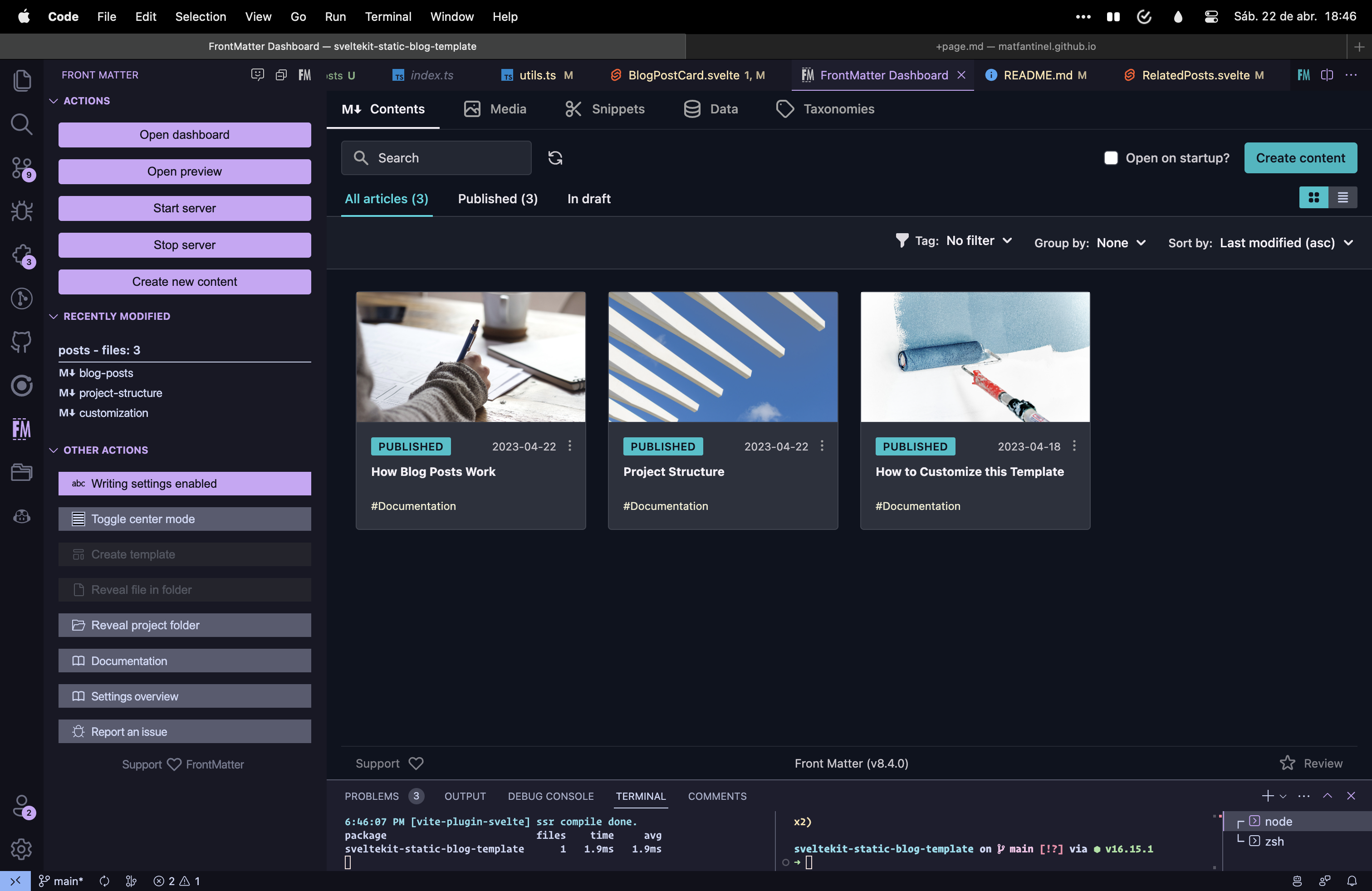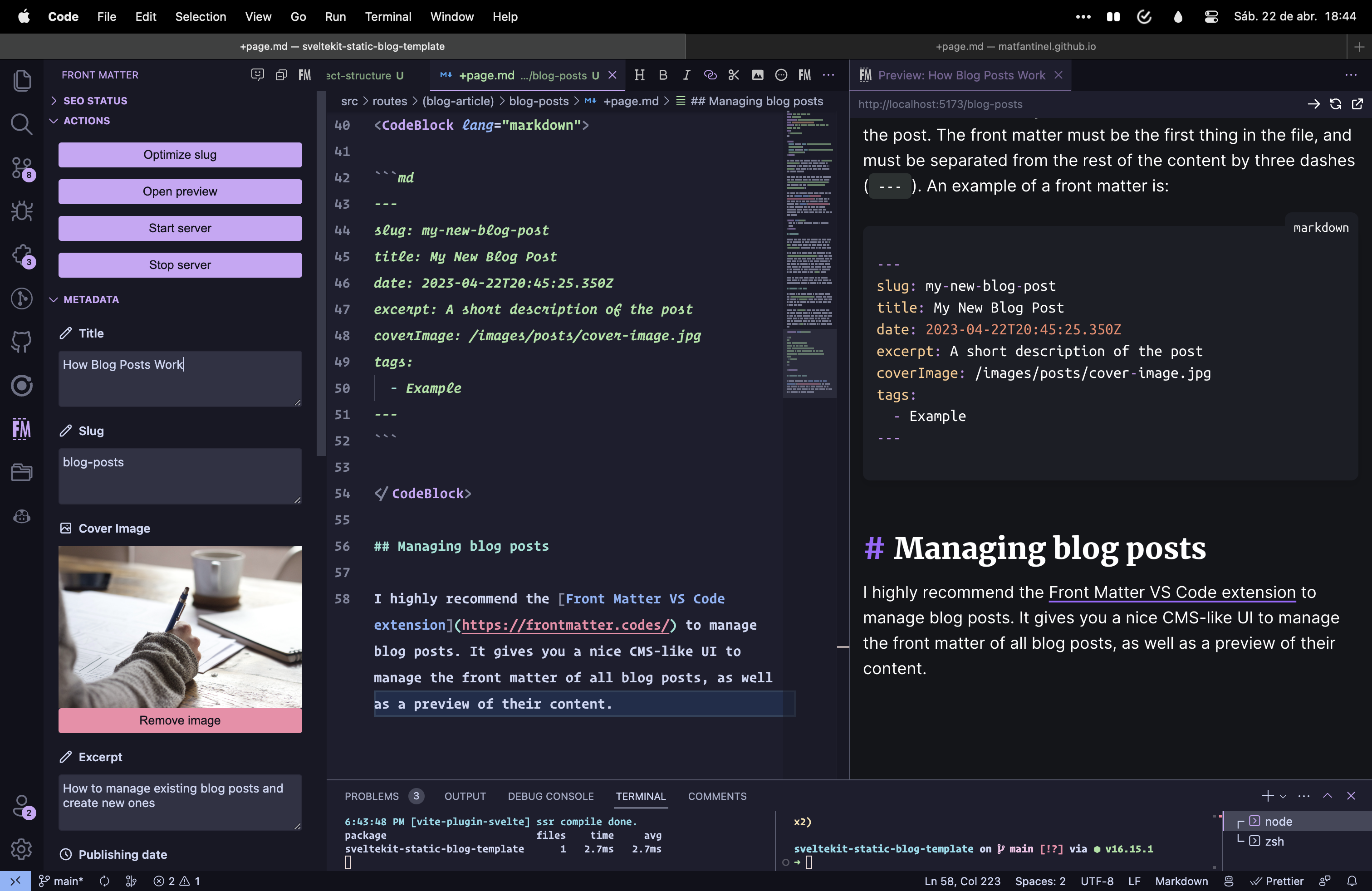How To Contribute To This Site
How to manage existing blog posts and create new ones on this site.

All blog posts are located inside the src/routes/(blog-article) folder. Each
folder inside it represents a blog post, and each folder has a +page.md file, which
is the file that contains the post's content.
This way, the URL for each blog post is generated with the folder's name. For example, the
folder src/routes/(blog-article)/how-blog-posts-work will generate the URL https://mysite.com/how-blog-posts-work.
All posts are Markdown files, which means you can use the Markdown syntax in them, and it will work out of the box. However, since this project uses MDsveX to parse Markdown, you can also use Svelte components inside them! This means that the components used in other pages can also be used in blog posts.
Processing
Besides the blog post page itself, the blog posts can be displayed in other places, such
as the /blog page, which lists all blog posts, and the <RecentPosts> component, used in the home page.
To be able to do that, posts are processed in the src/lib/data/blog-posts/index.ts file. That file imports the blog post files and processes them, so we're able to use some of
the post's metadata to list them. For example, we get the post's title, cover image, and calculate
the reading time based on its content, so that information is displayed in the blog post cards
in the /blog page.
There is also some basic logic to get related posts based on a post's tags. The logic should be straightforward enough to modify it to your needs.
Creating a new post
To create a new post, create a new folder inside the src/routes/(blog-article) folder, and inside it, create a +page.md file. The folder name will be used as
the post's URL slug, so make sure it's a valid URL slug.
Inside the +page.md file, you must start with the front matter, which is a
YAML-like syntax that is used to define metadata for the post. The front matter must be
the first thing in the file, and must be separated from the rest of the content by three
dashes (---). An example of a front matter is:
---
slug: my-new-blog-post
title: My New Blog Post
date: 2023-04-22T20:45:25.350Z
excerpt: A short description of the post
coverImage: /images/posts/cover-image.jpg
tags:
- Example
---Managing blog posts
I highly recommend the Front Matter VS Code extension to manage blog posts. It gives you a nice CMS-like UI to manage the front matter of all blog posts, as well as a preview of their content. It is, of course, optional, and you can manage everything directly in the Markdown files if you prefer.


RSS
This template automatically generates a RSS feed of your blog posts. It is generated in
the src/routes/rss.xml/+server.ts file, and it is available at the /rss.xml URL.
